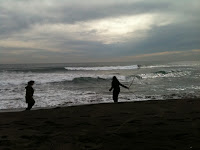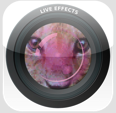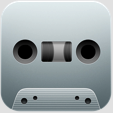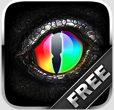I just came back from an awesome awesome week-end! I had monday 27th off for San Pedro y San Pablo and I asked for friday 24th, so I had a good amount of time to go to San Pedro de Atacama. AND I discovered how to create slideshows, which automatically put the copyright watermark on all the pictures. And some pictures are upside down. If you can't see the slideshows below just go to the very bottom of the page to access the albums.
DAY 1: Departure day
I flew from Concepción to Santiago at 11pm, got there an hour later. And then waited seven hours in the airport for my morning flight. Yep, SEVEN hours... I couldn't even sleep, it was too cold and there was this commercial going on and on on TV, I wanted to smash all of the televisions with a rock or something... My ticket for Conce-Santiago-Calama and back was 157.000 pesos. I could have saved tons by taking the night bus to Santiago, which would have been smarter cause I would have been able to sleep.
DAY 2: Arrival day
My flight left Santiago at 7am and we got to Calama at 9am. I had ordered an airport transfer to San Pedro, so a bunch of people from different flights were put in a van. We drove for an hour and a half. The scenery was beautiful. Most of the ride was barren land, with not a single plant or animal visible in the distance. Mountains had sharp edges which contrasted with the soft pastel colours. We crossed the Salar de Atacama, the third largest in the world (the first two are Oyuni in Bolivia and Salt Lake in th US). I sat next to a girl who turned out to be from Vancouver so we became friends and we talked all the way. The van dropped all the passengers off at the different hostels. It turns out every single house in San Pedro is either a hostel, a tourist agency, or a craft shop.
My hostel, El Anexo (La Casa de Esteban) was a couple mintues away by foot from the main plaza, which was great because you felt surrounded by nature and a bit less of a tourist. The road outside was a dirt road, and you had to cross a wooden gate that brought you to a dirt walkway surrounded by trees and hammocks, and the trail led you to the hostel.
In the slideshow you can see bits and pieces of the hostel. It was so pretty! The whole hostel was made with adobe, and the roof was made with some kind of hay. So after walking the dirt road, you got to the entrance of the main patio, the hang-out spot. Everyone always gathered here, either around the fire of the oven at night or around the rock table to enjoy the sun during the day. The adobe oven was where this french guy made french baguette every morning starting at 4 am. The reception was a roof connected to the kitchen. Under the roof there was a large wood table and a smaller table with speakers that were always playing chill music and a laptop we could use for internet. The main building had an internal patio faced by all the doors, which were all different colours. We had two shared bathrooms too, and they were always clean. I was supposed to get a double room with shared bathroom for 16.000 a night, but then I became friends with this really nice girl that was living at the hostel indefinitely so we decided to share, which was a great experience. I miss having a roommate! I know because it felt awesome when we introduced to each other's friends "This is my roommate"! So in summary, I payed 8.000 pesos for each night.
After leaving my stuff, I went with Paige (that's the girl that goes to Harvard I met on the transfer bus) to explore San Pedro and to register for an afternoon tour. We had a delicious meal at an adobe restaurant called Las Estacas (everything is made with adobe) for 6.000 which is not super cheap but not that expensive compared to some restaurants in Santiago. So we didn't feel that ripped off. Tours were on average 10.000 pesos each (some, like Valle de la Luna, were 7.000 and some were 15.000) We took a tour that included the following:
LAGUNA CEJAR - this is a lagoon five km south of San Pedro, formed by the accumulation of precipitated salts in an old saline lake. This type of high elevation wetland is known as a bofedal. Two lagoons, Cejar and Piedras, were surrounded by an amazing view of the Andes and especially the Licancabur, Lascar and Corona volcanoes. The lagoons' edges had sharp salt crystals on their shores, so we were not supposed to walk there barefoot. But we did. And we swam in Laguna Cejar. The water was the bluest BLUE because of the lithium in it (apparently), but the coolest thing however was the fact that the salt concentrations were so high that you could float effortlessly. It was amazing to be floating in a vertical position without needing to move your feet. The other really weird thing was that the top of the water was freezing, but the bottom was very warm with hot currents, so our legs and feet were doing great. Isn't it supposed to be the other way round?
OJOS DEL SALADO - these are two artificial holes in the ground created when someone was looking for oil. The cool thing here is the reflection, which is so clear it's like a mirror. Everyone was taking pictures of the reflections from across the opposite side. You could also jump in the water, but everyone was too cold from the salty lagoon.
LAGUNA TEBINQUINCHE - This was a huge lake which was very shallow, so you could walk to the middle of it barefoot and the water would only cover your feet. The bottom of the lagoon was pure salt. And the shores had a combination of salt and hard soil shaped like starfish. I felt what I can assume walking on starfish feels like! We watched the sunset here, with the volcanoes and the pink sky, and then we drank pisco sour, which is only the best drink I've every tried!
We went back to San Pedro and we had dinner with Paige's friends.
DAY 3: Being a tourist day
In the morning I had to wake up at 6 am to go on the tour for Laguna Chaxa. We drove through Tambio, were some llamas were crossing the street. Here there are four so-called 'American camels' : the llama and alpaca are domestic, and the vicuña and guanaco are wild. We saw the llamas eating tamarugo trees, which were apparently brought from India.
TOCONAO - Here I got a hat that made me look even more like a tourist. This town has 500 people living in it and most of them work in lithium mining. Here there is a lithium mine that produces 60% of the world's lithium, imagine that! What is lithium used for? Medicines, batteries, TV, tons of things. Houses were not built with adobe, but with volcanic licarite.
LAGUNA CHAXA - were the falmingos are! We walked through the Salar the Atacama to get to the Lagoon. There are no plants and very few mammals, like a tiny mouse you can see sometimes. But the conditions are right for there to be tons of unicellular algae and microscopic invertebrates, which are the flamingos' food! It was crazy walking through this desert of salt. The flamingos were kind of far and I wished I had a pair of binoculars with me. But we learnt many cool facts! For examples, flamingos live 25 years and they have a baby every year. Also, they are pink because the shrimp they eat is pink. And when they are young they have tons of partners, but then when they get older they stay with their partner for life.
SOCAIRE - a very depressing little town where the most interesting thing was the church. But everything looked abandoned and under construction. Later that day I was trying to remember which town Socaire was, and Nuri my friend from Spain was like "mmm that town where you took off your pants". She meant where I changed from my jeans to shorts, because it was too hot. But that's the most memorable thing, the town where I took off my pants...
A super magical thing happened here too! So there is this point in the highway where "the Earth's magnetic field is reversed" and magnetic objects are moved uphill. So we were driving down a slope, the driver stopped the van, turned off the motor, and slowly but surely the van started rolling UPHILL! And it started gaining speed and up we went. I have no idea how that happened. The magnetic field thing sounds like bullshit so it must have been an optical illusion, where we were really going downhill but it looked like uphill?? I was amazed.
Later that day:
VALLEY OF DEATH: This place is like being in a live geography classroom! Miss David would love it! You could see the enormous mineral sculptures formed by wind and rain all around you. The geological origin comes from an emerged lake, where old layers of sediment and rock where pushed and folded by the movement of the Earth's crust, lifting the Andes Mountain Range. You could see a huge part of the Salar de Atacama (Atacama Salt Plains) from here, amazing white brilliance made up of salt hills, gypsum and clay. The tour guide got us out of the van, collected everyone's cameras, and lined us up in a good spot which apparently everyone wanted, and he systematically took pictures of us. He was a photo machine. This place is called Valle de la Muerte because one of the following (every tour guide told a different story) a) nothing grows here, b) someone died here, c) this french guy Gustavo La Paige wanted to say Valle de MARTE but thanks to his french pronunciation the meaning got lost in translation, or d) cattle died here when people were crossing to Argentina.
VALLEY OF THE MOON: To get here we stopped at the Salt Caves. The guy that was taking us was so clumsy he tripped with his own feet. He was like, "Ok, so we're going inside the cave now. It's dark, so we will divide the flashlights and you follow someone with a light. We will cross an area where we will need to crawl to get through. Follow me, be VERY careful with your head and back.. Ok, let's go!" and he would turn and smack his face against a rock he hadn't seen.
After watching him fall and stuff, we went to a huge sand dune which we climbed in order to see the sunset from here. Then, more pisco sour!
That night I had a great time with these two French couples and a Spanish couple I met on the tours! We went to have dinner and a couple of drinks, and I was impressed by how well I could communicate in French. I had absolutely no problem speaking and I understood everything, even when they were speaking super fast. I really want to continue with that language now!!
DAY 4: The busiest day
GEYSERS EL TATIO: The geysers had been closed for a couple days because the road was blocked with snow. But on Sunday they finally opened! I woke up at 3am to go see them. They picked me up at 4am and we got there at 6am. Ok, so the geysers were my favourite thing!!! I had never seen geothermal activity like that. It was a huge field with water vapour everywhere. And it's only like that in the morning. As the day becomes warmer, the activity stops. It was not that cold but my hands were FREEZING because I was taking pictures. For breakfast we had bread, coffee and hard boiled eggs, cooked in a geyser in a plastic bag! We also went to some hot springs were we could swim if we wanted to. Of course I wanted to. So the brave ones took off their clothes and jumped in the warm water, which is heated thanks to magmatic activity in the Earth's crust. There were parts where boiling water came out of the sand, so you had to be careful. I burnt my foot because I got too close to a boiling point. But it felt so good to be in that water! I thought it would be like an Indian bath with everyone stuck in the hot springs, but most people didn't feel like swimming.
GENERAL SIGHTSEEING: We crossed so many different landscapes that day. We saw vicuña, which apparently produce 350 grams of wool every three years, which is why a vicuña sweater costs like tons of money. People used to kill them before, but now CONAF goes after them, puts them to sleep, shears them and gives the wool to the locals. Another thing we saw from the bus were huge dark spots in the middle of the desert. It turns out vicuñas poop in the same spot all the time, something that has to do with finding their way back. So they have bathrooms! We also went to a lake and saw tons of birds. There's the Tagua, which walks really awkwardly and that's were the Chilean expression for when you're drunk "caminar como Tagua" comes from.
MACHUCA: A town formed by less than twenty houses. No more than ten people live here at any given time. People stop here to a) go to the bathroom, b) have a look at the church, and c) try llama meat. This one is the most popular. Hordes of tourists were lined up to try brochetas y empanadas de llama. It felt weird invading this lost little town in the middle of nowhere, not knowing anything about those eight people that live there. The houses had wooden crosses on the roofs, a sign of religious syncretism.
CACTUS VALLEY: A valley filled with Equinopsis atacamensis cacti. They were HUGE! They can live like 300 years and they can be up to 12 metres tall. The ones we saw were like 8 metres tall. I didn't go all the way to the cacti because I stayed with Patricio the tour guide putting conical shaped rocks on top of other rocks. He called it verticalidad geologica. So we would get any rock with an elongated shape and a sharp tip, and balance it perfectly on top of any large boulder. It was just amazing. He would put one on top of the other too! Another thing that was like magic. VALE: Man is that weird, or what?!!?
SANDBOARD: In the afternoon I went sandboarding! It was so much fun. The only problem was that, unlike snowboard, you had to walk up the dune and there was no lift. The instructor sucked, he was like, "Yeah so you can do it however feels good for you..." Hmm thanks. They made videos of us, but I didn't go pick mine up because I left the following day.
STAR TOUR: At night I went with some other French friends to the see the stars. The stars in the desert are just amazing, in case you didn't know. We were driven to the middle of the desert to an observatory this French astronomer started eight years ago. We were taught about the constellations, and the astronomers would point at the sky with green laser that would reach all the way up! We then looked into telescopes to look at Saturn and specific stars. Really fun. We then had hot chocolare (well, ours was warm because we stayed out too much looking through the telescope). There's this awesome iPhone app that shows you the constellations when you point your phone to the sky. You should get it, it's called Pocket Universe.
 |
| El Anexo (La Casa de Esteban) |
 |
| DAY 2 |
 |
| DAY 3 |
 |
| DAY 4 |




























































